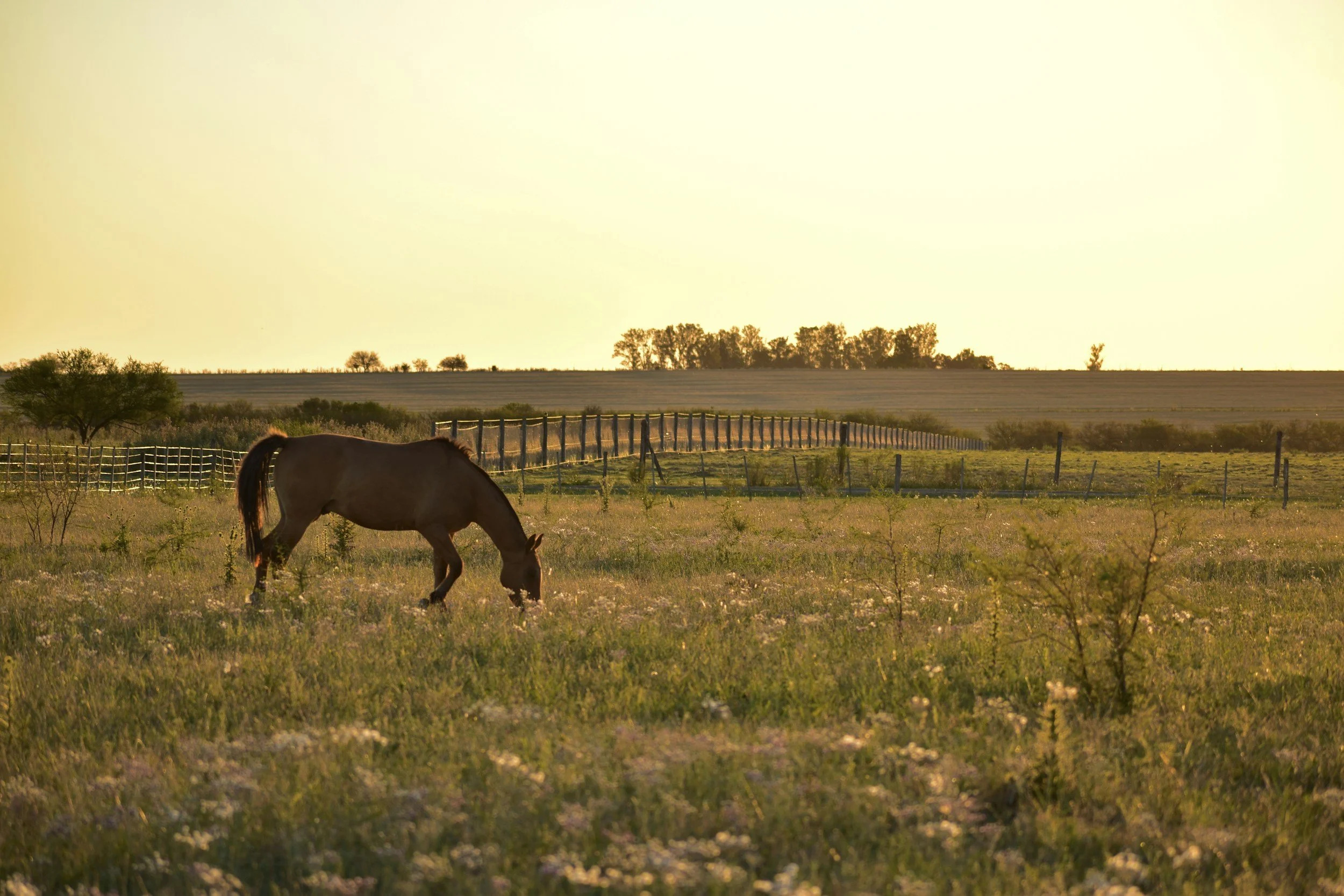The close of the summer term has sparked renewed discussion of the Prevent All Soring Tactics Act (PAST Act) HR, 1518, sponsored by Rep. Ed Whitfield, R-Ky., and 303 other House members. It was referred to the Subcommittee on Commerce, Manufacturing, and Trade, where it has remained stalled since April 12, 2013. With nearly 70 percent of the House in support of this Bill, outcries from supporters challenge legislators to pass the legislation before the end of this session.
“Citizen Science” and the New World of EPA Regulatory Enforcement
In March, 2013, the Environmental Protection Agency delivered a presentation at an Air Monitoring Workshop describing what it termed “Next Generation Air Monitoring”. The goal was to spur development of new air monitoring technologies, primarily localized and low-cost alternatives to the more expensive method of traditional, stationary lab analysis. More specifically, the presentation emphasized the promise of active citizen involvement via “citizen science”.
SCOTUS Opinion Allows EPA More Regulatory Power
The Supreme Court took away some of the Environmental Protection Agency’s (EPA) power on Monday June 23, 2014. In an opinion written by Justice Scalia in Utility Air Regulatory Group v. Environmental Protection Agency, the Court took away some of the EPA’s power to impose harsher emission standards. However, the Court simultaneously protected a majority of the EPA’s power to regulate greenhouse gases.
A ‘Vicious’ Animal Named Scuppy
The horse industry in Connecticut was thrown into turmoil in May of 2006 at the hooves of a horse named Scuppy. In Vendrella v. Astriab Family Limited Partnership, the Supreme Court of Connecticut recently released its 6-0 decision in April, affirming the Appellate Court’s ruling that a horse belongs to “a species naturally inclined to do mischief or be vicious.”
Taking a Stride Back: Dirt Track Changes Coming to the Bluegrass
By: Eric Finke, Staff Member
In 2006, Keeneland introduced its current synthetic track to increase the safety of horses under the stress of racing on dirt.[iv] This safety trend was seen nationwide as the California Horse Racing Board went so far as to require tracks, including the famous Santa Anita Park, to lay down a synthetic surface by 2007.[v] A surface switch proved to be a success based on studies of the Equine Injury Database.[vi] As recent as 2013, there were only 0.43 breakdowns per 1000 starts at Keeneland on the synthetic track surface, while the overall breakdown rate across the nation on dirt surfaces was 2.11 per 1000 starts.[vii] In the midst of all this change, Churchill Downs continued using a dirt surface, causing many owners to begin bypassing tracks like Keeneland, in favor of dirt.[viii] Horse owners that once eyed the Blue Grass Stakes as the premier event for testing the Derby waters have begun to stay away in recent years.[ix] World famous horse trainer Todd Pletcher has refused to run on a synthetic surface with a true frontrunner in his stable, preferring to run on a consistent dirt surface that would be comparable to what Churchill Downs has to offer.[x]
[i] VisitLex: About Lexington, http://www.visitlex.com/about/, (last visited Apr. 9, 2014).
[ii] Alicia Wincze Hughes, Keeneland to replace synthetic racing surface with return to dirt track, Kentucky.com (Apr. 2, 2014), http://www.kentucky.com/2014/04/02/3174914/keeneland-to-replace-synthetic.html.
[iii] Keeneland spring meet offers Derby, Oaks preps, Washington Times (Apr. 3, 2014), http://www.washingtontimes.com/news/2014/apr/3/keeneland-spring-meet-offers-derby-oaks-preps/.
[iv] Natalie Voss, Keeneland’s Switch Back to Dirt Track Could Appeal to Breeder’s Cup and Derby Contenders, Business Lexington (Apr. 7, 2014), http://bizlex.com/2014/04/keeneland-switch-back-to-dirt-track-could-appeal-to-breeders-cup-and-derby-contenders/.
[v] Hughes, supra note 2.
[vi] Equine Fatality Summary: Keeneland, Equine Injury Database, http://www.jockeyclub.com/pdfs/eid/Keeneland.pdf (last visited Apr. 9, 2014).
[vii] Supplemental Tables of Equine Injury Database Statistics for Thoroughbreds, The Jockey Club, http://jockeyclub.com/pdfs/eid_5_year_tables.pdf (last visited Apr. 9, 2014).
[viii] Voss, supra note 4.
[ix] Hughes, supra note 2.
[x] Don Agriss, Up the Backstretch: A back-to-nature movement in racing, The Island Packet (April 3, 2014), http://www.islandpacket.com/2014/04/03/3039209/up-the-backstretch-a-back-to-nature.html.
[xi] Voss, supra note 4.
[xii] Andrew Beyer, Keeneland reluctantly will be digging the dirt once again, Washington Post (Apr. 9, 2014), http://www.washingtonpost.com/sports/othersports/keeneland-reluctantly-will-be-digging-the-dirt-once-again/2014/04/09/080dbb3a-bfff-11e3-b574-f8748871856a_story.html.
[xiii] Joe Drape, A Track’s Shift to Dirt Adds to Horses’ Risks, The New York Times (Apr. 3, 2014), http://www.nytimes.com/2014/04/04/sports/in-a-tracks-decision-horses-are-the-losers.html?hpw&rref=sports.
[xiv] Joe Tash, Del Mar Fairgrounds to replace synthetic track with dirt, Del Mar Times (Apr. 9, 2014), http://www.delmartimes.net/2014/04/09/del-mar-fairgrounds-to-replace-synthetic-track-with-dirt/.
[xv] Breeder’s Cup, http://www.breederscup.com/history/event-year (last visited Apr. 9, 2014).
[xvi] Hughes, supra note 2.
EPA Proposal Takes Great Steps to Broaden Clean Water Act Jurisdiction
By: Connor Egan, Editor-in-Chief
On March 25, 2014, the Environmental Protection Agency and Army Corps of Engineers released a proposed rule amending the Clean Water Act.
The proposal is a response to a near decade of demand by state and federal legislators and environmental groups to clarify the extent of the Act’s jurisdiction.
The proposed rule clarifies the Act’s jurisdiction over the nation’s streams and wetlands by amending its definition of “water.”
Today, Supreme Court decisions in 2001 and 2006
have left many uncertain as to the actual breadth of the Act’s coverage.
The proposed rule remedies this uncertainty by explicitly listing wetlands and intermittent streams as protected waters.
The EPA and Corps of Engineers are currently engaged in a 90-day outreach effort to solicit comment before the final rule making.
In an op-ed released in conjunction with the proposed rule, EPA Administrator Gina McCarthy explained, “[w]e are clarifying protection for the upstream waters that are absolutely vital to downstream communities.”
In a coordinate press release, the EPA stressed that the amendments would be consistent with the recent Supreme Court decisions, which seemingly narrowed the scope of Clean Water Act jurisdiction.
Since the proposal’s release, is has been hailed as the “biggest step forward for clean water in more than a decade.”
While the rule will not be finalized until early summer, its ratification would bring approximately 20 million acres of wetlands and 2 million miles of streams under EPA protection.
_________________
EPA and Army Corps of Engineers Clarify Protection for Nation’s Streams and Wetlands: Agriculture’s Exemptions and Exclusions from Clean Water Act Expanded By Proposal, EPA, Mar. 25, 2014,
[hereinafter Press Release] (publication in Federal Register still pending).
Id.
Id.
See Rapanos v. United States, 547 U.S. 715 (2006); Solid Waste Agency of N. Cook Cnty. v. U.S. Army Corps of Engineers, 531 U.S. 159 (2001).
Neela Banerjee, Clean Water Act proposal would protect more water sources in West, L.A. Times, Mar. 25, 2014, available at
http://www.latimes.com/nation/la-na-epa-waters-20140326,0,1080552.story#axzz2yznfcabq
.
Press Release, supra note 2.
Id.
Gina McCarthy, Clearer Protections for Clean Water, The Huffington Post, Mar. 25, 2014, available at
http://www.huffingtonpost.com/gina-mccarthy/clearer-protections-for-c_b_5029328.html
.
Press Release, supra note 2.
Environment America, EPA Rule Would Close Loopholes in Clean Water Act, Restore Protections for Streams and Wetlands, EcoWatch, Mar. 25, 2014,
http://ecowatch.com/2014/03/25/epa-clean-water-act-restore-protections-wetlands/
.
Kate Bissell, Proposed Rule to Clarify Clean Water Act Coverage, The Wildlife Society, Mar. 31, 2014,
http://news.wildlife.org/featured/proposed-rule-to-clarify-clean-water-act-coverage/
; Juliet Eilperin and Darryl Fears, EPA proposes greater protections for streams, wetlands under Clean Water Act, Wash. Post, Mar. 25, 2014, available at
.
UK College of Law: KLJ & KJEANRL Hold Annual Banquet
A Horse Owner’s Tax Checklist
[i] 26 I.R.C. § 183(a) (2014).
[ii] See id. § 183(b).
[iii] Peter Reilly, Horse Breeders Win in Tax Court, Forbes (Aug. 13, 2011), http://www.forbes.com/sites/peterjreilly/2011/08/13/horse-breeders-win-in-tax-court/.
[iv] See 26 I.R.C. § 183(a)-(b) (2014).
[v] See generally Blackwell v. Comm’r., No. 29287-09, T.C. Memo. 2011-188 (2011).
[vi] See id. at *6.
[vii] Id. at *1.
[viii] Id. (citing Dreicer v. Comm’r, 78 T.C. 642, 645 (1982)).
[ix] See id. at *6-*8.
[x] Id. at *8.
[xi] See id. at *6-*8.
Defend the Michigan Natural Resources Trust Fund
The Attorney General for the State of Michigan is Bill Schuette and he has been a staunch upholder of the Michigan Constitution.[i] Recently, he spoke about the need to preserve the Michigan Natural Resources Trust Fund (MNRTF) for its intended purpose.[ii] In 1984, the MNRTF began by an amendment to the Michigan Constitution.[iii] The MNRTF “is used to develop public recreation lands and is supported by oil, gas, and other mineral lease and royalty payments.” [iv] Thus, “the trust fund is constitutionally restricted for natural resources improvements and land acquisitions across the state.”[v] Since Michigan passed a constitutional amendment, legislators should not be allowed to reallocate money from the Trust Fund for their own “programs or projects.”[vi] Recent economic troubles in Michigan have led to a desire by lawmakers for the money to go elsewhere despite the constitutional implications involved.[vii] Attorney General Schutte has been clear in his directive through an “official opinion” that the Michigan legislature cannot do that.[viii] Schuette should continue to defend the MNRTF and ensure that the legislature allocates money from the fund properly.
Michigan has some of the most scenic parks and tourist areas in the country, and these areas need the MNRTF funds for both preservation and revitalization.[ix] “The Michigan Senate recently approved legislation allocating $27.6 million from the Natural Resources Trust Fund for 76 projects across the state, including upgrades to Midland’s Emerson Park area along the Pere Marquette Rail-Trail.”[x] It is in the best interest of Michigan residents that the state continues to attract visitors to enjoy the natural beauty of its natural resources. Tourists visiting Michigan from other states will inevitably spend money in the state, which will therefore lessen the state’s financial woes.[xi] Schuette should remain steadfast in protecting the MNRTF to preserve the state’s vast natural resources and defend the Michigan Constitution like he has done with so many other constitutional issues.[xii]
_________________
[i] Ilsa Matthes, Attorney General on Tour of U.P., Escanaba Daily Press (Mar. 28, 2014), http://www.dailypress.net/page/content.detail/id/546803/Attorney-general-on-tour-of-U-P-.html.
[ii] Id.
[iii] Id.
[iv] Id.
[v] Natural Resources Trust Fund Plan Passed by Senate Supports Local Park Improvements, Midland Daily News (Mar. 30, 2014), http://www.ourmidland.com/news/natural-resources-trust-fund-plan-passed-by-senate-supports-local/article_8048c60b-1c77-59bc-8488-56c0ff3c2365.html.
[vi] Matthes, supra note 1.
[vii] Id.
[viii] Id.
[ix] Natural, supra note 4.
[x] Id.
[xi] Matthes, supra note 1.
[xii] Id.






